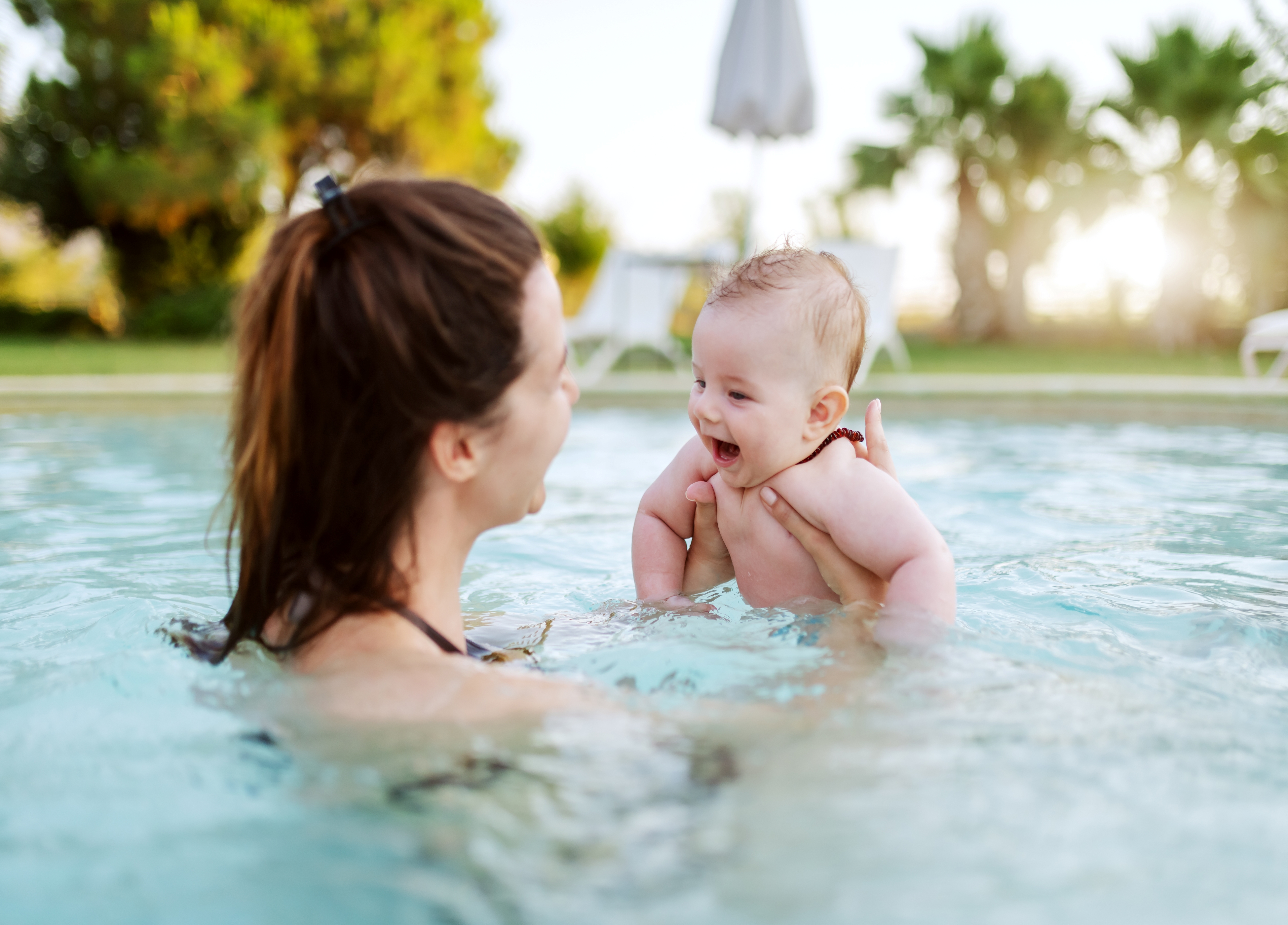10 Pool Safety Tips for Children this Swimming Pool Season
According to the Centers for Disease Control and Prevention (CDC), more children aged 1-4 years die from drowning than from any other cause except congenital disabilities. Every year in the United States, there are an estimated 3,960 (11 per day) fatal intentional drownings and 8,080 (22 per day) nonfatal drownings. Many of these children drown during non-swim times, when they weren't expected to be in the water, including as the swimming activity was coming to an end, and everyone was thought to be out of the water. Children were often out of sight for less than 5 minutes and in the care of one or both parents at the time.
Proper supervision can prevent harm to your children while still allowing them to enjoy the pool. Children love to wander and explore, and your pool is a location for their adventures. When you are not able to keep an eye on children, you need to have precautions in place to avoid any potential danger. Below a list of safety tips that can help decrease the chances of disasters occurring.

Top 10 Pool Safety Tips for Kids
-
Watch Kids While They Are In Or Around Water
Keep young children and weak swimmers within arm's reach of an adult. Ensure that even more experienced swimmers are accompanied by a partner at all times. Keep your phone close by at all times in case you need to call for help. If a child is missing, check the pool first. Don't rely on the use of water wings, swim wings, inflatable toys, or other items designed for water recreation to replace adult supervision.
-
Choose A Water Watcher
If several adults are present, designate one to be responsible for supervising children in or near the water for a specified period. After that time is up, select another adult to be the water watcher. Watching children should be their only task, and they should stay within arm's reach of young children or weak swimmers.
-
Avoid Distractions When Your Child Is In Or Around Water
Contrary to popular belief, drowning is often silent and can occur in less than five minutes. This means you need to give your child your undivided attention, so put away your phone, books, and magazines. This remains important even if you believe your child is a strong swimmer.
-
Teach Children to Swim
Every child is different, and you know your child best, so enroll them in swim lessons when they're ready. Take into consideration their age, development, and the frequency with which they're around water. There are many free or reduced-cost options available through your local YMCA, USA Swimming chapter, or Parks and Recreation Department.
-
Make Sure Your Children Learn Water Survival Skills
Make sure that your child knows how to:
- Step or jump into water over their head and return to the surface
- Turn around in the water and orient to safety
- Float or tread water
- Combine breathing with forward movement in the water
- Exit the water
-
Install Safety Devices
A Pool Fence should surround all sides of your pool, and be at least four feet tall with self-closing and self-latching gates. Ensure that there's no way for your child to climb over the fence, and teach them not to attempt it. A four-sided fence that separates the pool area from the house and yard reduces a child's risk of drowning.
Several states have legislation that requires a fence to be installed around pools. Check your local legislation to determine if a fence is required, including the minimum height requirements.
For above ground pols, secure, lock, or remove steps, ladders, and any other items that can be used for access (such as outdoor furniture and toys) whenever an adult is not actively supervising the pool.
A Pool Alarm is also recommended. These will alert you if there's unauthorized access to your pool by a child or a pet.
-
Be Aware of Pool Drains
Teach your child not to swim or stand near pool drains or suction outlets. Consider replacing old, non-Virginia Graeme Baker Act-compliant drains with newer, compliant ones. This is especially important in spas and shallow pools. Never enter a pool that has a loose, broken, or missing drain cover. When using a spa, be sure to locate the emergency vacuum shutoff before getting in the water.
-
Establish and Enforce Rules and Safe Behaviors
- Do not enter headfirst unless in a pool that has a safe diving area
- Stay away from drains and other openings that cause suction
- Swim with a buddy- never swim alone
- Get out of the pool and inside when there are threats of a storm
- Don't play rough in the pool, especially with young children
- No jumping on each other in the pool, or holding anyone underwater
- Don't run near a swimming pool - slipping over can cause serious injuries
- Only swim when supervised
- Always ask permission before going near the water
-
Learn CPR and Basic Water Rescue Skills
It's essential to know how to respond in an emergency without also putting yourself at the risk of drowning. Often, bystanders are the first to aid a drowning victim, so learning these skills may help you save a life. CPR classes are available through many hospitals, community centers, or by contacting the American Red Cross.
-
Understand That Water Temperature Can Affect Swimming Ability
Falling into cold water can cause cold shock, making swimming difficult even for the strongest swimmers. Remember to dress according to the water temperature, not the air temperature.
Frequently Asked Questions About Child Pool Safety
What are the most essential safety tips for kids?
The most important safety tips include constant adult supervision, installing a pool fence with a self-latching gate, using a pool alarm, teaching children how to swim, and enforcing strict pool rules such as no running or diving. Always keep rescue equipment and a phone nearby in case of emergencies. These simple steps alone can help reduce the risk of accidents drastically.
At what age can a child swim unsupervised?
Experts recommend that no child under the age of 14 should swim unsupervised, no matter their perceived swimming ability. Even experienced swimmers can get into trouble dur to fatigue, cramps, or sudden slips. For toddlers, ensure you maintian "touch supervision", where an adult is always within arm's reach.
Do pool alarms help prevent children from drowning?
Yes, pool alarms can be an effective layer of protection - they alert you immediately if a child enters the pool area or falls into the water. While they should never replace adult supervision, alarms can provide cirital seconds to respond and prevent drowning.
What kind of pool fence is safest for children?
The safest pool fence for children is one that is at least four feet high, has faps no wider than 4 inches, and includes a self-closing, self-latching gate that opens outwards. Always ensure that the fence meets local pool fence codes.
How deep should a pool be for kids to swim safely?
For young children learning to swim, a pool depth of 3 to 4 feet is generally considered the safest. Shallow water allows kids to touch the bottom easily, which builds confidence and safety. For toddlers or non-swimmers, use a kiddie pool or shallow area where they can stanfd with their head entirely above water.






 Pools
Pools Spas
Spas Liners
Liners Equipment
Equipment Covers
Covers Accessories
Accessories Cleaning
Cleaning  Pool Fun
Pool Fun  Clearance
Clearance
